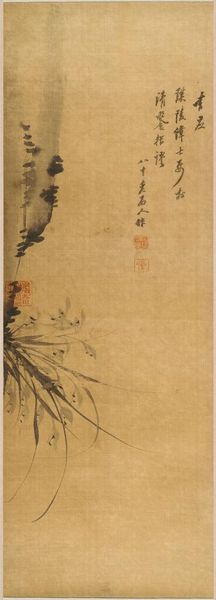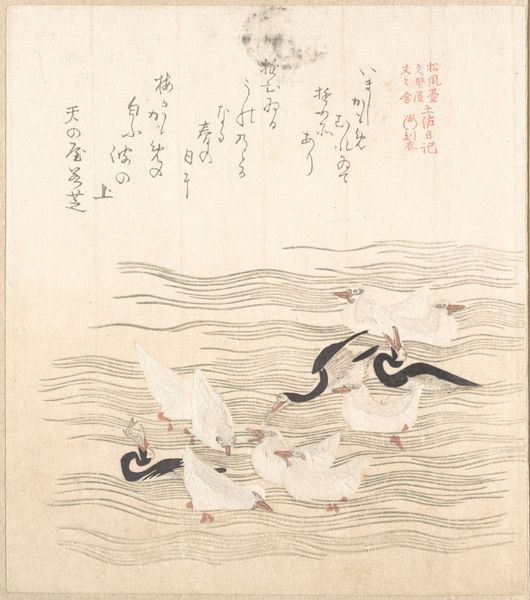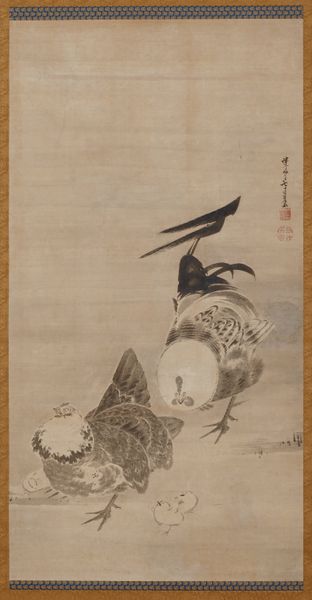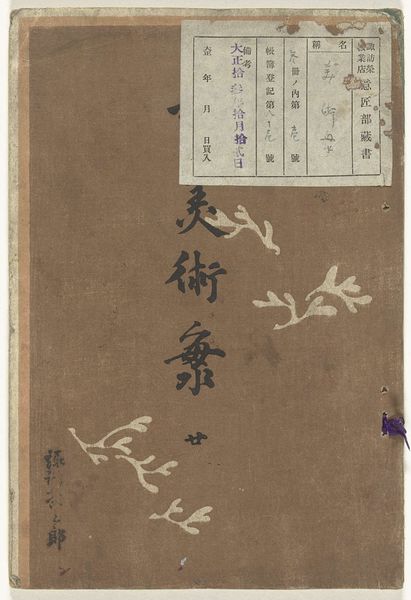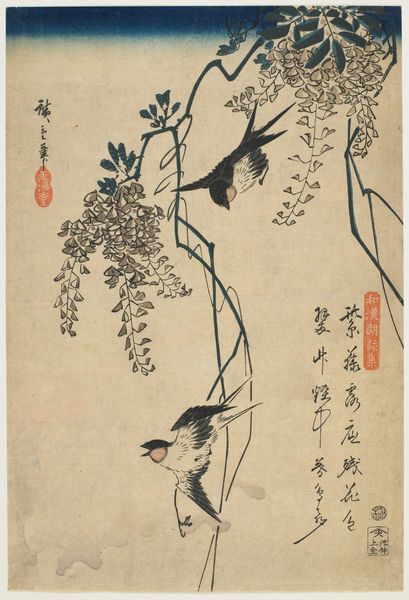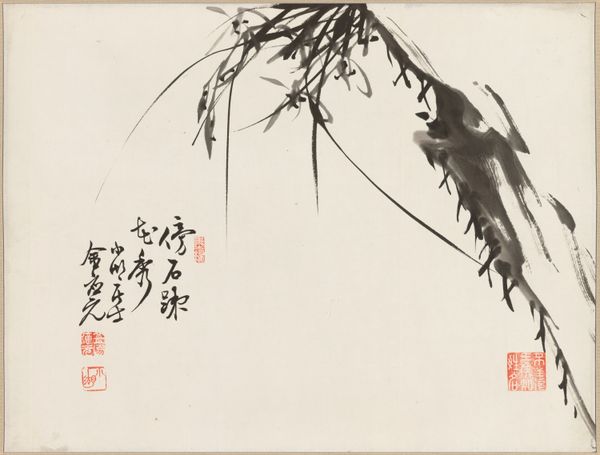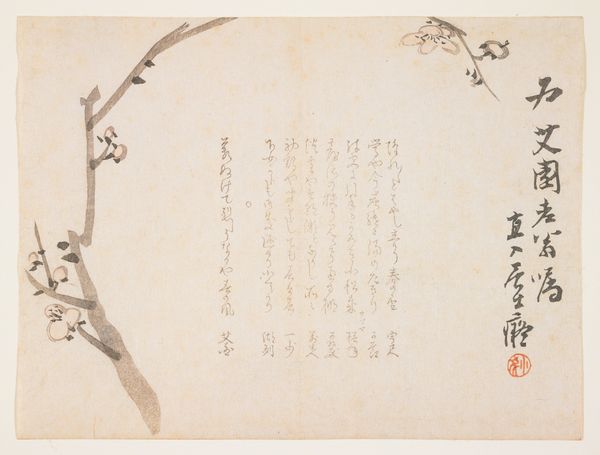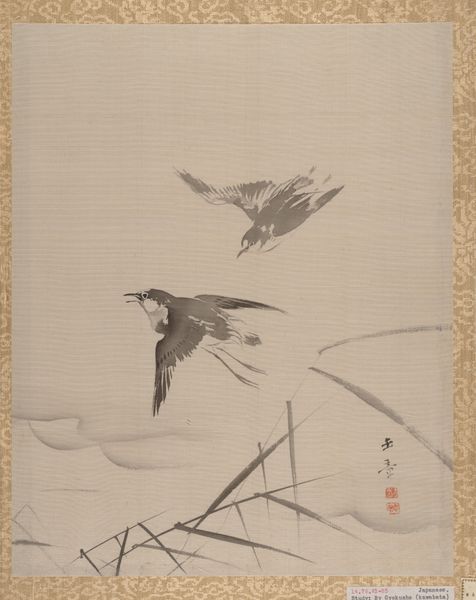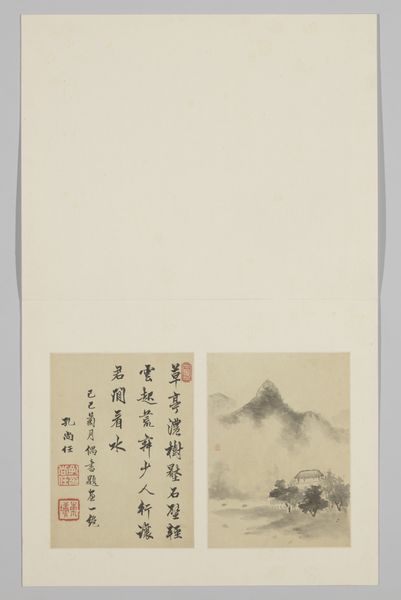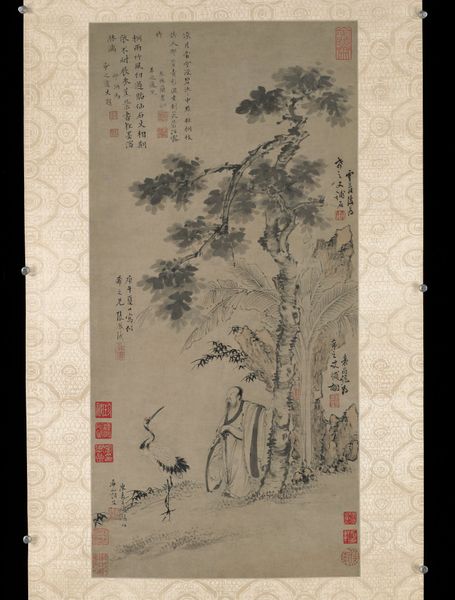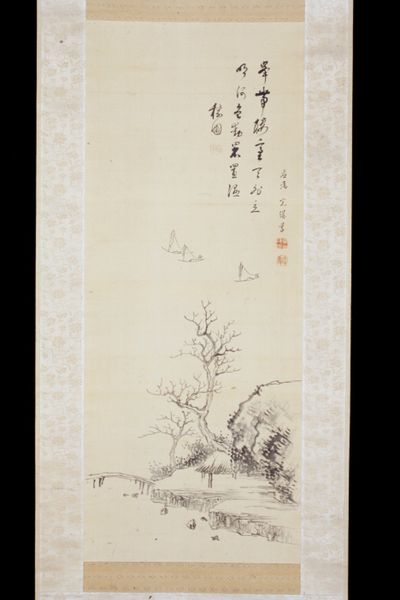
painting, paper, ink-on-paper, hanging-scroll, ink
#
portrait
#
aged paper
#
toned paper
#
painting
#
asian-art
#
figuration
#
paper
#
ink-on-paper
#
hanging-scroll
#
ink
#
abstraction
#
line
Dimensions: 35 1/16 x 15 3/4 in. (89.06 x 40.01 cm) (image)
Copyright: Public Domain
Curator: This hanging scroll, titled "Two Chicks," dates back to around 1694 and is attributed to Zhu Da. The ink-on-paper work is part of the collection at the Minneapolis Institute of Art. It’s remarkable how much empty space there is. Editor: Indeed. My first impression is of a kind of meditative emptiness. The two birds feel so small and solitary against the aged, toned paper. Curator: Zhu Da, also known as Bada Shanren, lived through the tumultuous transition from the Ming to the Qing dynasty. The minimalist nature of his work—his seeming rejection of detail and narrative—can be understood as a form of quiet resistance, or perhaps disillusionment, against the socio-political climate. Editor: I see the birds, then, as potential symbols of resilience, survival even? Their very presence, rendered so simply, becomes an act of defiance. What can you tell us about the institutional and social influences affecting the creation of pieces like this one? Curator: In the 17th century, literati painting traditions placed heavy emphasis on the artist’s personal expression and scholarly cultivation. The court also heavily influenced artistic trends by employing artists as civil servants who created propaganda. Independent artists, like Zhu Da, developed ways to maneuver and react against the court's artistic domination. This informed the reception of his art. His art challenged traditional authority which increased his influence and popularity in later decades, during similar social challenges. Editor: Considering Zhu Da's positionality within the political milieu of his time, viewing these seemingly innocent birds can be very insightful. The negative space itself becomes charged with the weight of what’s unsaid, the things one couldn't express overtly under the Qing. Curator: The brushwork, seemingly simple, reveals immense control and subtlety when studied closely. This tension, between restraint and profound expression, permeates the entire composition and underscores the intellectual rigor behind what appears, at first glance, to be an understated scene. Editor: It reminds us how powerful suggestion can be—how absence can speak volumes about identity and lived experience, particularly under duress. Thank you, that gives me so much to think about regarding the nuances of the work.
Comments
minneapolisinstituteofart almost 2 years ago
⋮
Zhu Da, also known as Bada Shanren, often expressed complex ideas using simple images. It is likely that these quickly rendered chicks express the artist's loyalty to the former Ming dynasty, while indicating his contempt for the ruling Manchus. Zhu Da saw himself as being in, but not part of, the society around him. With his imperial lineage eradicated by the conquering Manchus, he was unable to submit to the foreign rulers. Although the chicks are of the same species and face in complementary directions, they do not look at each other. Each isolated chick exists in a separate world. The inscription reads: Painted in the Garden of Yellow Bamboo by Bada Shanren, the nineteenth day of the third lunar month. The nineteenth day of the third lunar month is now known to commemorate the day in 1644 when the last Ming emperor hanged himself as rebel forces approached the capital.
Join the conversation
Join millions of artists and users on Artera today and experience the ultimate creative platform.
